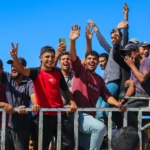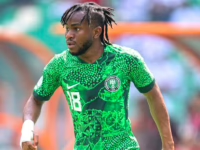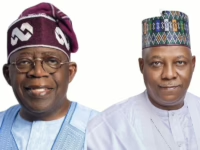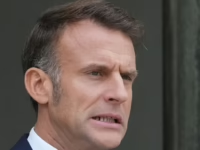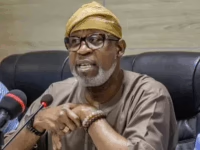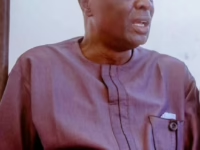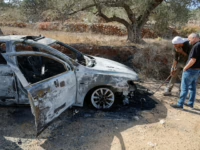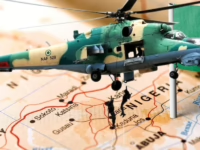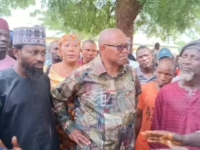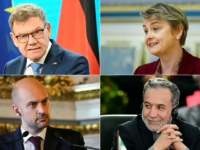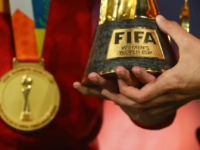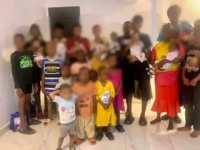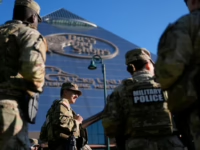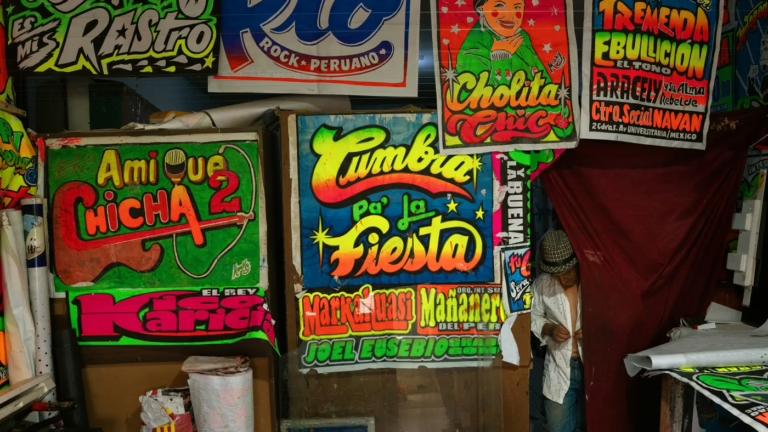Pedro Tolomeo Rojas, famously called Monky, steps into his Lima studio on October 21, 2024. He was instrumental in designing the colorful posters that advertise cumbia concerts, now recognized as chicha art. These vivid posters continue to brighten Lima and beyond, announcing upcoming shows.
Ivan Kashinsky
hide caption
toggle caption
Ivan Kashinsky
This article is part of the special series, Cumbia Across Latin America, a visual journey spanning six countries over several years, highlighting the communities, traditions, and cultures that sustain this vibrant music genre.
In Peru, the term chicha carries multiple meanings: it refers to a traditional fermented corn beverage, a form of popular culture, a distinctive art style, and notably, Peruvian cumbia music. Historically, it has also been wielded as a pejorative label, used to deride the immigrant cultures that flourished in Lima during the large-scale migration of Indigenous Andean populations in the 20th century. Within the musical realm, the word remains a subject of debate and complexity.
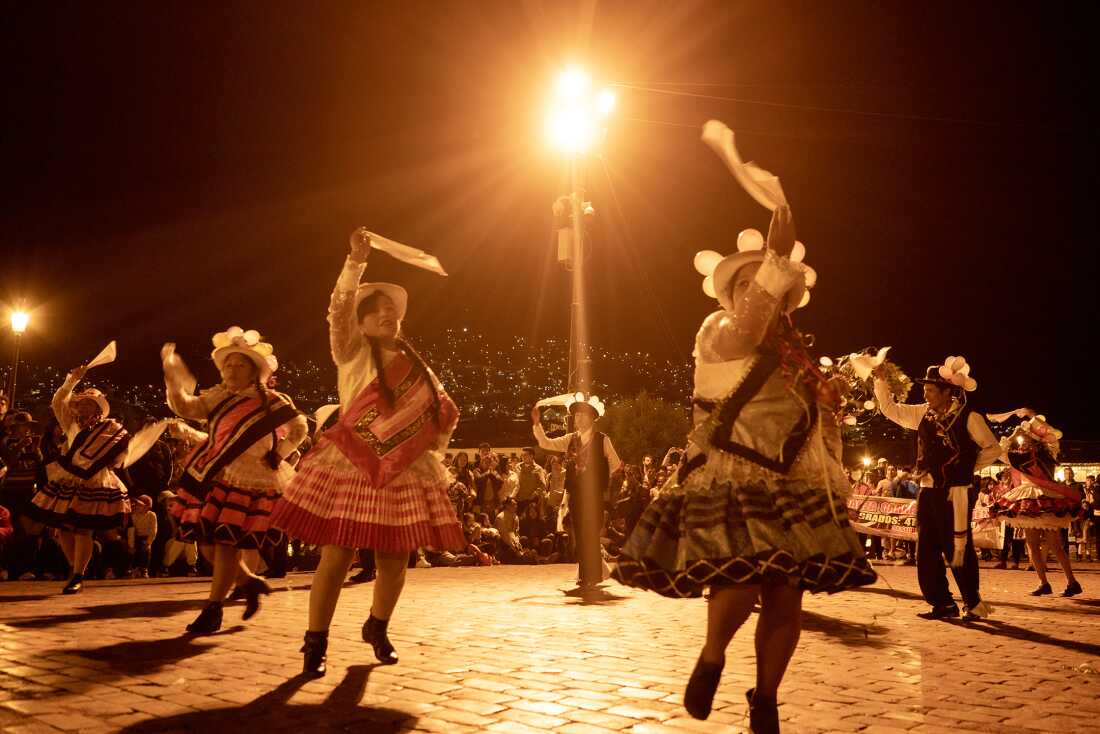
Students from a high school perform traditional huayno dances in Cusco’s Plaza de Armas on November 3, 2024. This folkloric music fused with Colombian cumbia and other genres to create the distinctive Peruvian cumbia called chicha.
Ivan Kashinsky
hide caption
toggle caption
Ivan Kashinsky
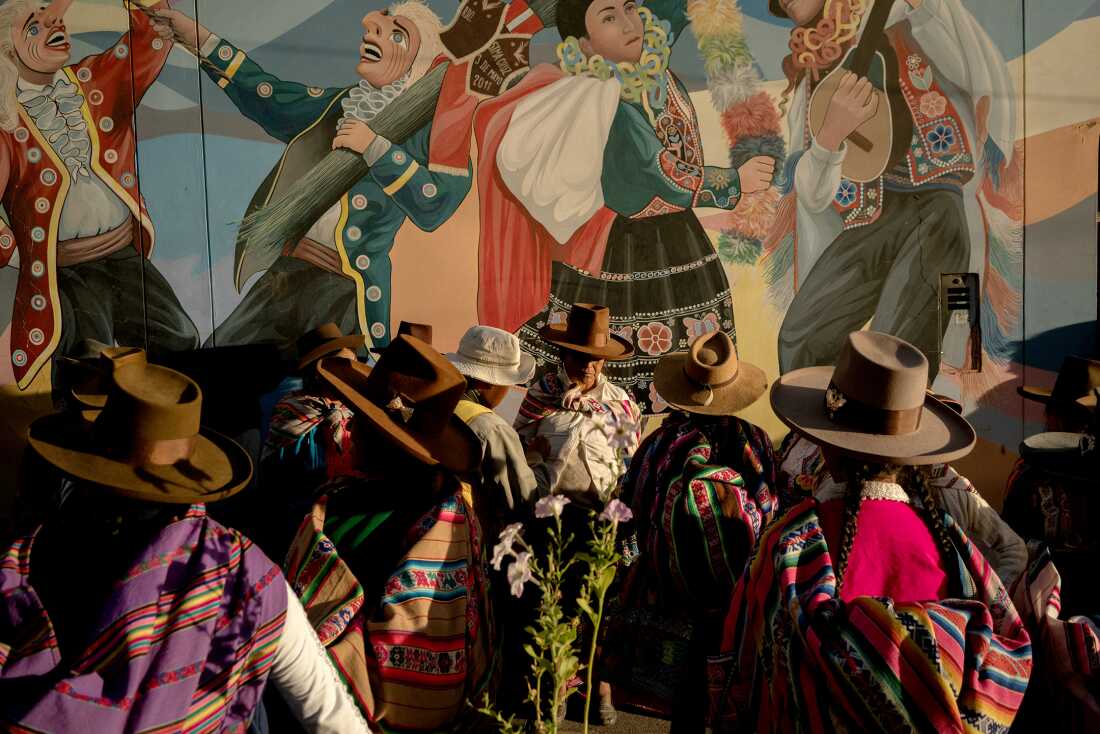
After the 137th anniversary festivities in Sicuani, Peru, on November 4, 2024, women gathered to celebrate. The vivid hues of indigenous attire are said to have inspired the colorful chicha art posters advertising cumbia concerts. That night, Armonía 10, a cumbia orchestra established in 1972, performed live.
Ivan Kashinsky
hide caption
toggle caption
Ivan Kashinsky
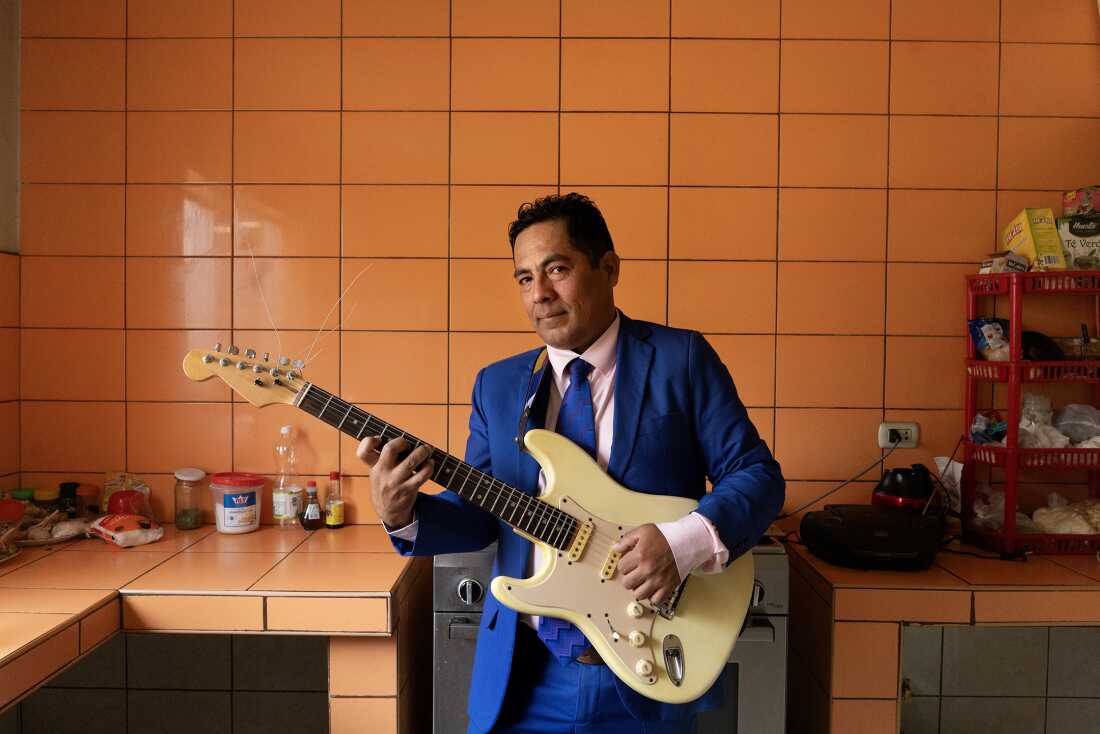 guitar in his Lima kitchen on November 2, 2024. His father, Manzanita, helped shape the chicha sound, blending electric guitar with Colombian cumbia, Andean huayno, Cuban guaracha, rock ‘n roll, and other styles.” loading=”lazy”/>
guitar in his Lima kitchen on November 2, 2024. His father, Manzanita, helped shape the chicha sound, blending electric guitar with Colombian cumbia, Andean huayno, Cuban guaracha, rock ‘n roll, and other styles.” loading=”lazy”/>
Berardo Hernández Jr., or Manzanita Jr., poses with his guitar in his Lima kitchen on November 2, 2024. His father, Manzanita, played a key role in crafting the chicha sound, which fuses electric guitar with Colombian cumbia, Andean huayno, Cuban guaracha, rock ‘n roll, and more.
Ivan Kashinsky
hide caption
toggle caption
Ivan Kashinsky
Inside a modest peña-a local neighborhood club-in Lima, two iconic musicians, Berardo Hernández Jr. (son of Manzanita) and Pancho Acosta from Compay Quinto, filled the room with intricate, melodic electric guitar riffs. Their fingers danced rapidly over the strings, eschewing picks, captivating the audience who swayed and smiled, immersed in the enchanting soundscape. These artists, alongside Enrique Delgado of Los Destellos, were pivotal in shaping the chicha genre, which prominently features electric guitar and embodies a distinctly Peruvian essence.
Berardo, known as Manzanita Jr., embraces the perspective that all Peruvian cumbia falls under the umbrella of chicha. Conversely, Pancho Acosta argues that chicha specifically refers to Tropical Andina, a sub-genre blending Colombian cumbia with Andean huayno folk music. Alfredo Villar, a respected author and art historian, describes chicha as “the most intricate expression of Peruvian identity, merging its deepest indigenous roots with diverse and complex external influences. This complexity makes chicha endlessly surprising.”
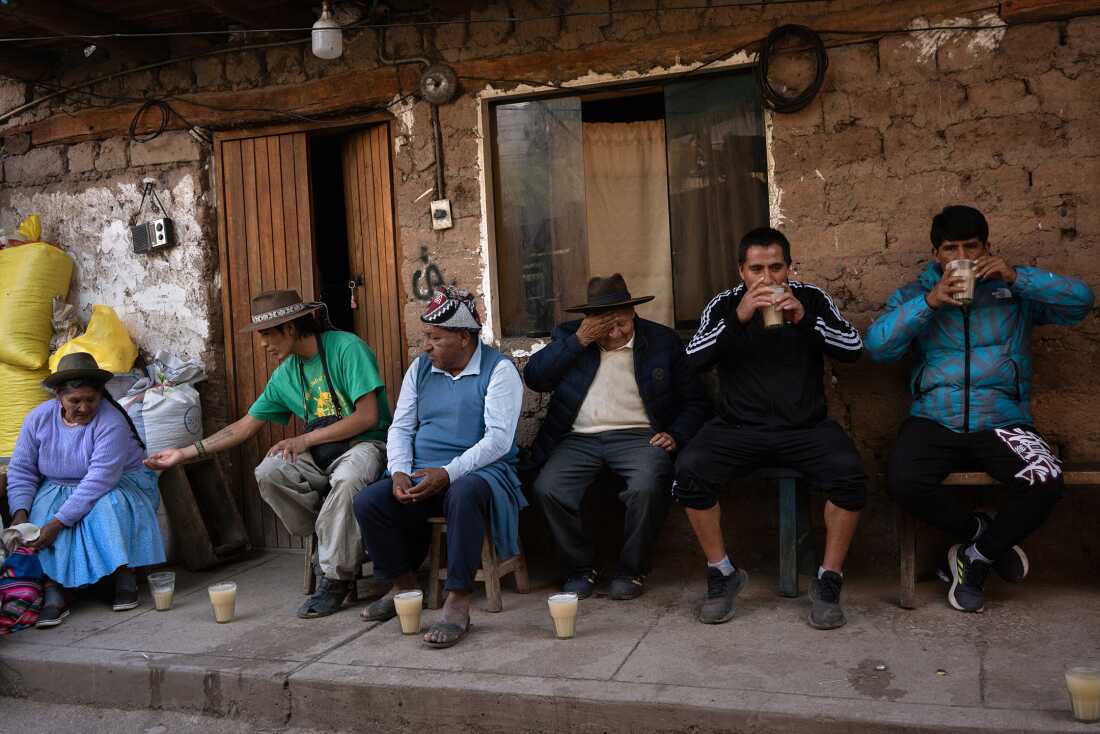
Patrons savor chicha, a traditional fermented corn drink, at a checheria in Calca, near Cusco, on November 6, 2024. Once sacred to Indigenous communities, the term chicha evolved to describe Peruvian cumbia, carrying both cultural pride and controversy.
Ivan Kashinsky
hide caption
toggle caption
Ivan Kashinsky
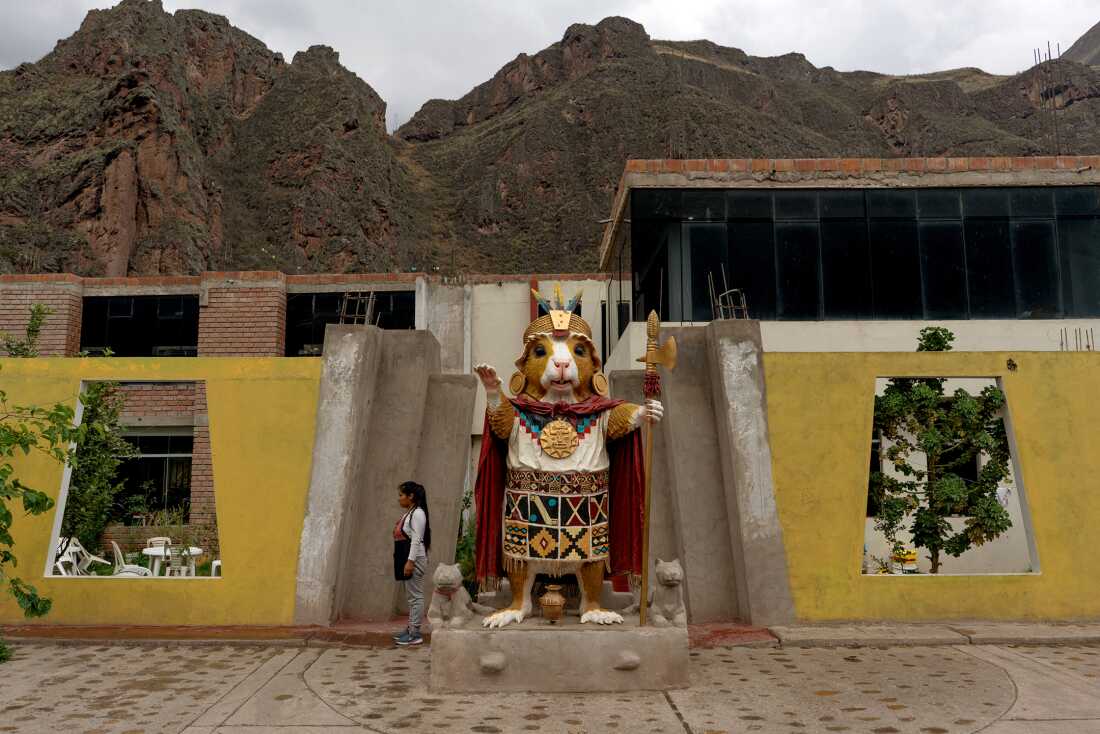
A woman poses next to an “Inca cuy” (guinea pig) in Lamay, near Cusco, on November 6, 2024. Like chicha, the fermented corn beverage, cuyes were revered by Indigenous communities in the area.
Ivan Kashinsky
hide caption
toggle caption
Ivan Kashinsky
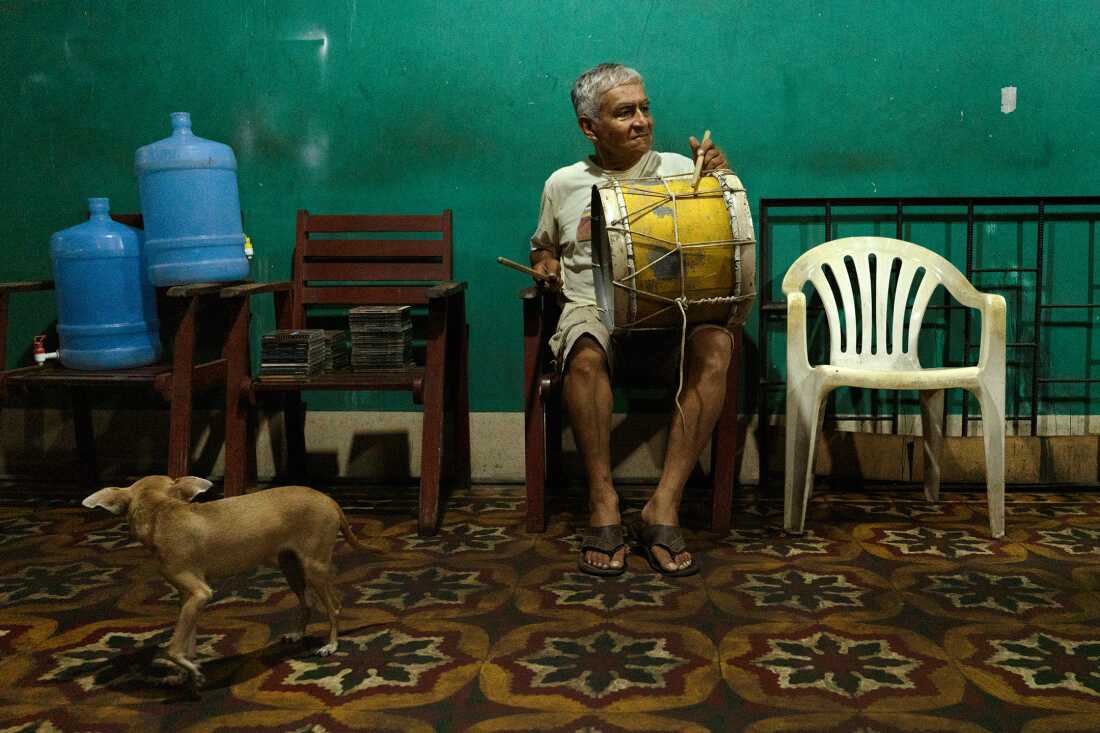
Helner Misael Sánchez Casanova, known as Tacto, performs on the bombo drum at his residence in Iquitos, Peru, on October 26, 2024. As a member of Los Wembler’s de Iquitos, a band founded in 1968, he helped pioneer cumbia Amazonica, a fusion of Colombian cumbia, Amazonian beats, psychedelic guitar, jungle noises, and other musical influences.
Ivan Kashinsky
hide caption
toggle caption
Ivan Kashinsky
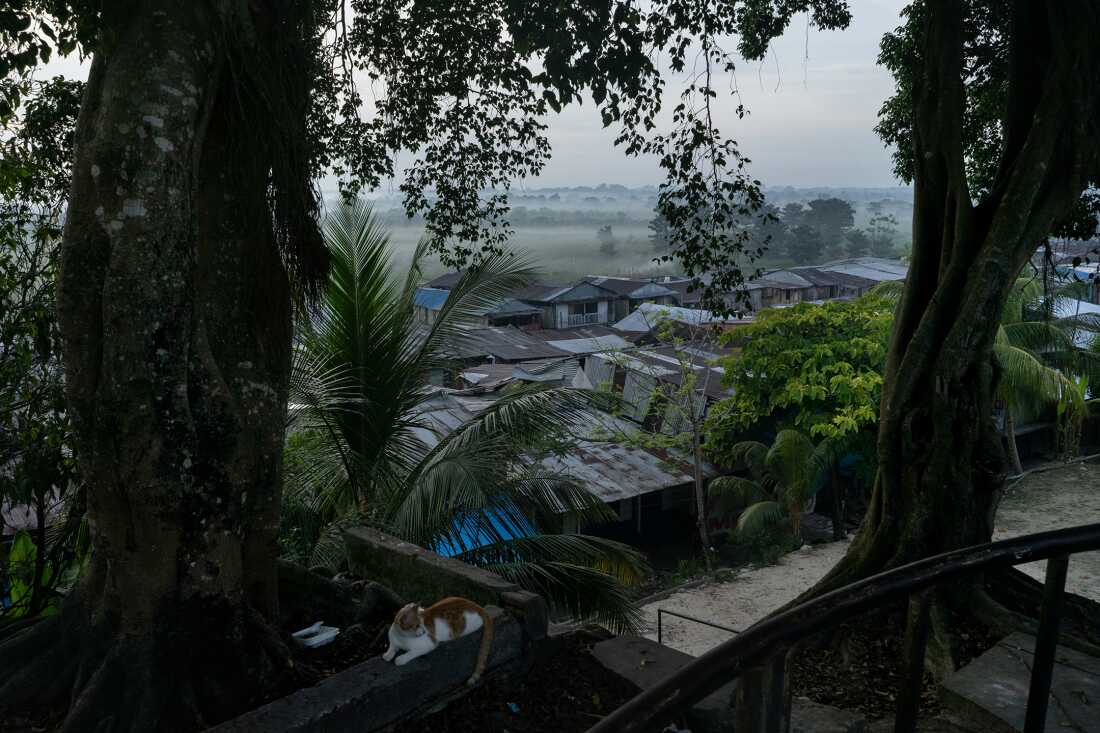
The Belén district as seen from the city of Iquitos, Peru, on October 26, 2024.
Ivan Kashinsky
hide caption
toggle caption
Ivan Kashinsky
The extraordinary blend of Colombian cumbia, Cuban guaracha, Andean huayno, psychedelic rock, and a myriad of other genres such as jazz and bossa nova, all converged in Lima during the late 1960s to create a rich and flavorful musical style. Chicha reached its zenith in the 1980s, propelled by figures like Lorenzo Palacios Quispe, known as Chacalón or El Faraón de la Cumbia, and Los Shapis, an Andean ensemble from Huancayo, who popularized chicha among the masses.
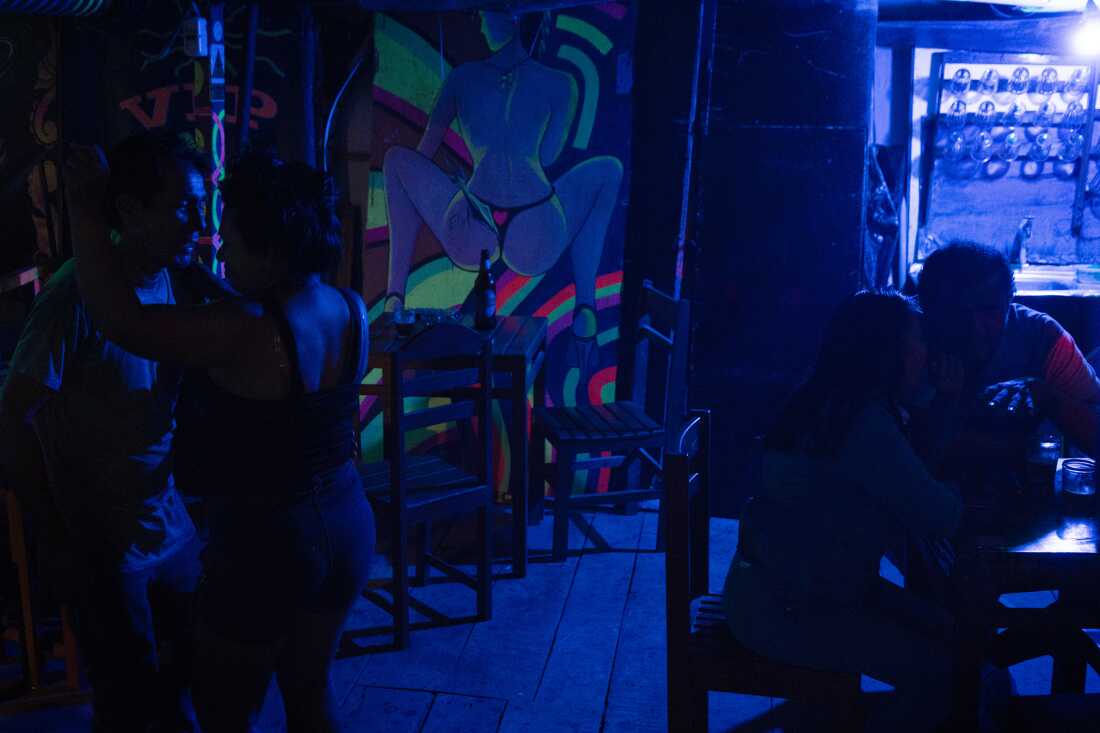
José “Ashuco” Araujo’s Amazonian chicha artwork decorates the walls of El Refugio, a popular cumbia bar in Iquitos, Peru, where couples dance and socialize on October 26, 2024.
Ivan Kashinsky
hide caption
toggle caption
Ivan Kashinsky
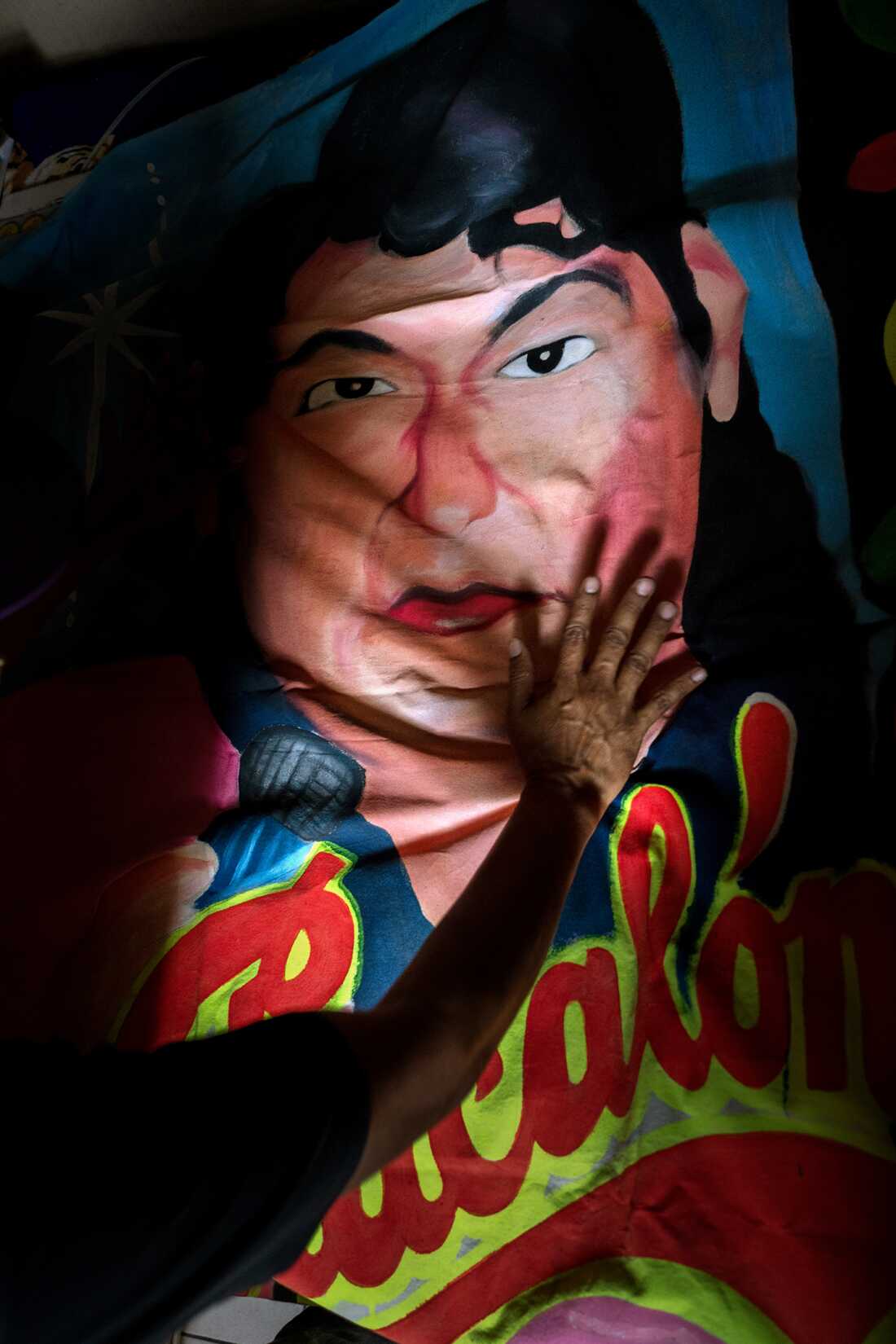
Alfredo Villar Luquin, an author immersed in chicha culture, rests his hand on a Monky painting of Chacalón in his home on November 11, 2024. Chacalón played a key role in bringing chicha to widespread attention in Lima.
Ivan Kashinsky
hide caption
toggle caption
Ivan Kashinsky
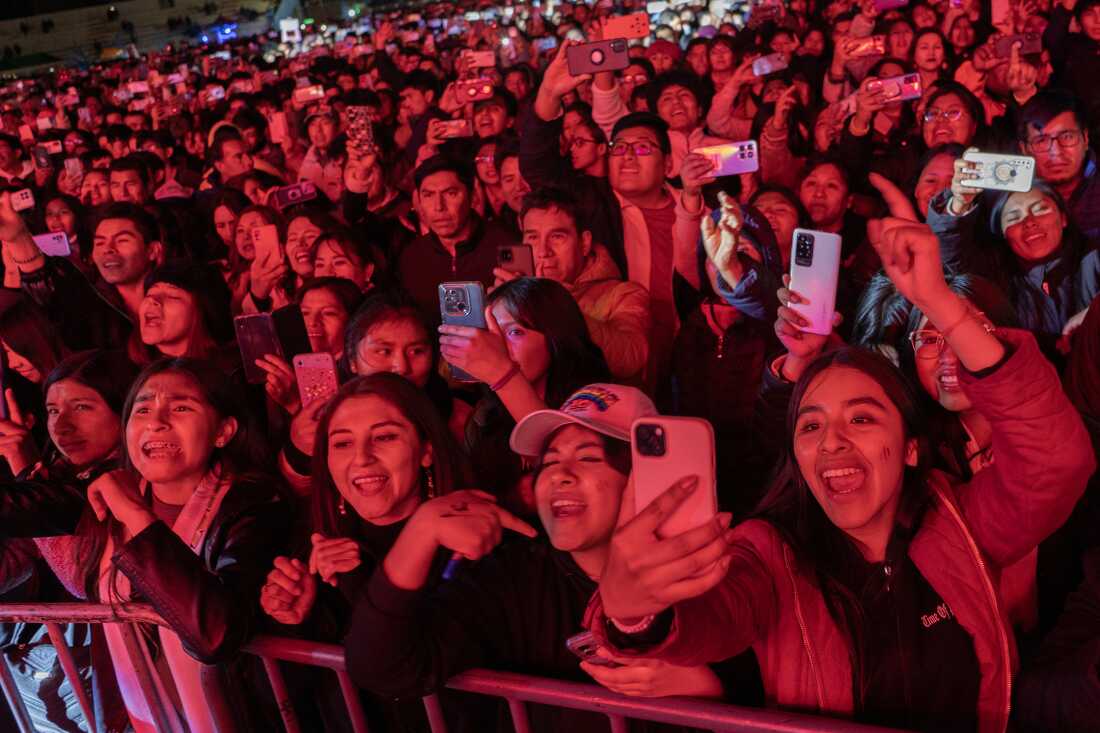
Enthusiasts of Armonía 10 watch the band perform at Sicuani’s 137th anniversary celebration on November 4, 2024. Founded in 1972, Armonía 10 remains a vital part of Peru’s cumbia tradition.
Ivan Kashinsky
hide caption
toggle caption
Ivan Kashinsky
Chacalón, born to migrant parents and raised in the San Cosme neighborhood on Lima’s hills, rose from humble beginnings working various jobs to become a beloved icon among marginalized migrant communities. His heartfelt songs about everyday struggles and the migrant experience drew thousands from hillside barrios to the city center, inspiring the saying, “When Chacalón sings, the mountains come down.” In 1983, Los Shapis made history by filling a stadium in Lima, showcasing the power of chicha and the cultural presence of Andean migrants. Chacalón passed away at 44, with 60,000 mourners attending his funeral, while Los Shapis went on to tour internationally.
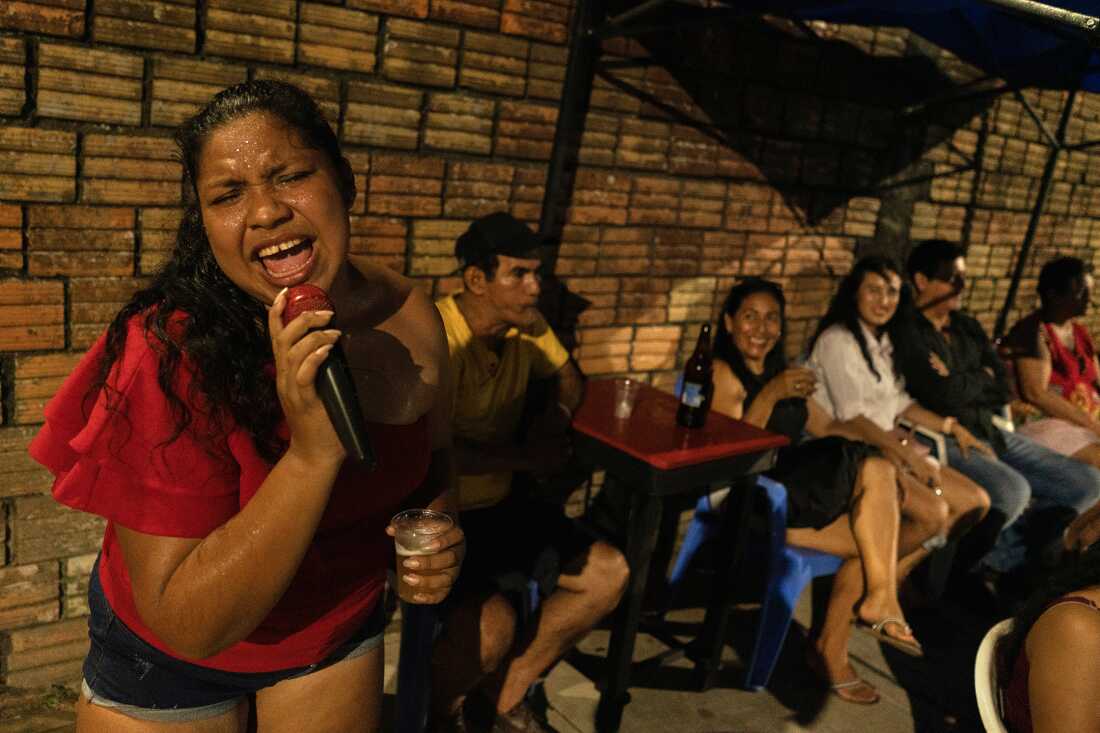
Estella Gonzalez, a vocalist with Son Estrella, performs on the streets of Iquitos on October 27, 2024, promoting her band, which specializes in cumbia and other tropical genres.
Ivan Kashinsky
hide caption
toggle caption
Ivan Kashinsky
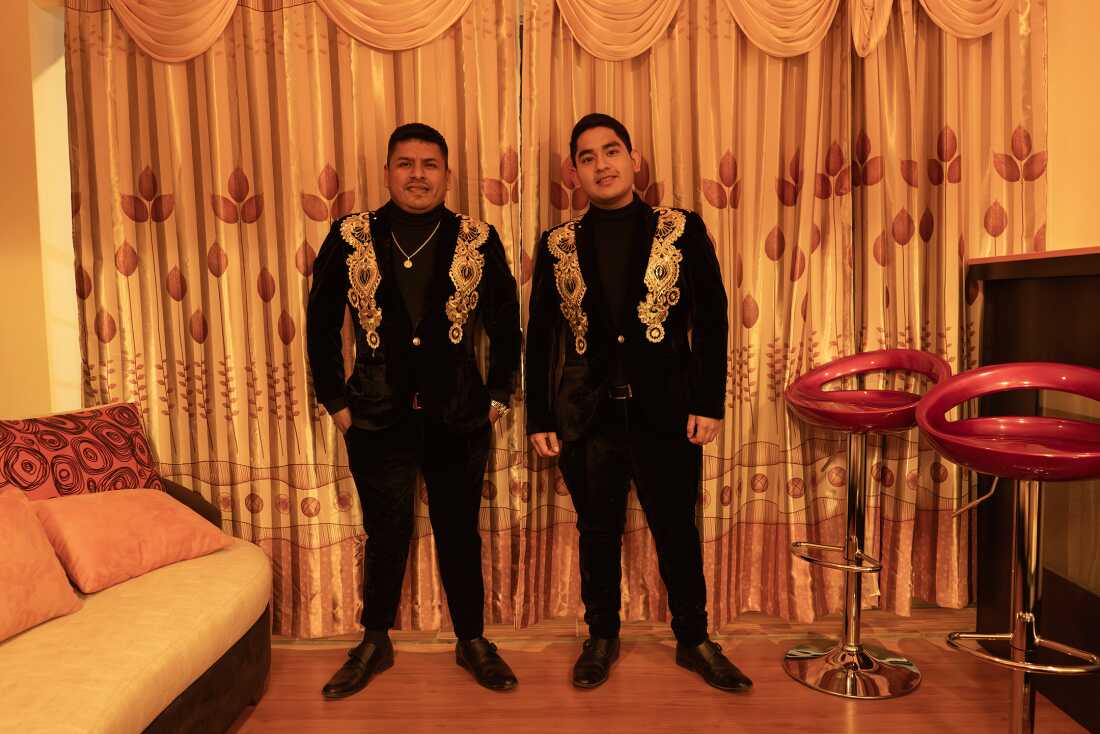
Jose Luis Mendoza Zapata, bongo player, and Leandro Lozada, vocalist of Armonía 10, pose in their hotel room before performing in Sicuani, Peru, on November 4, 2024.
Ivan Kashinsky
hide caption
toggle caption
Ivan Kashinsky
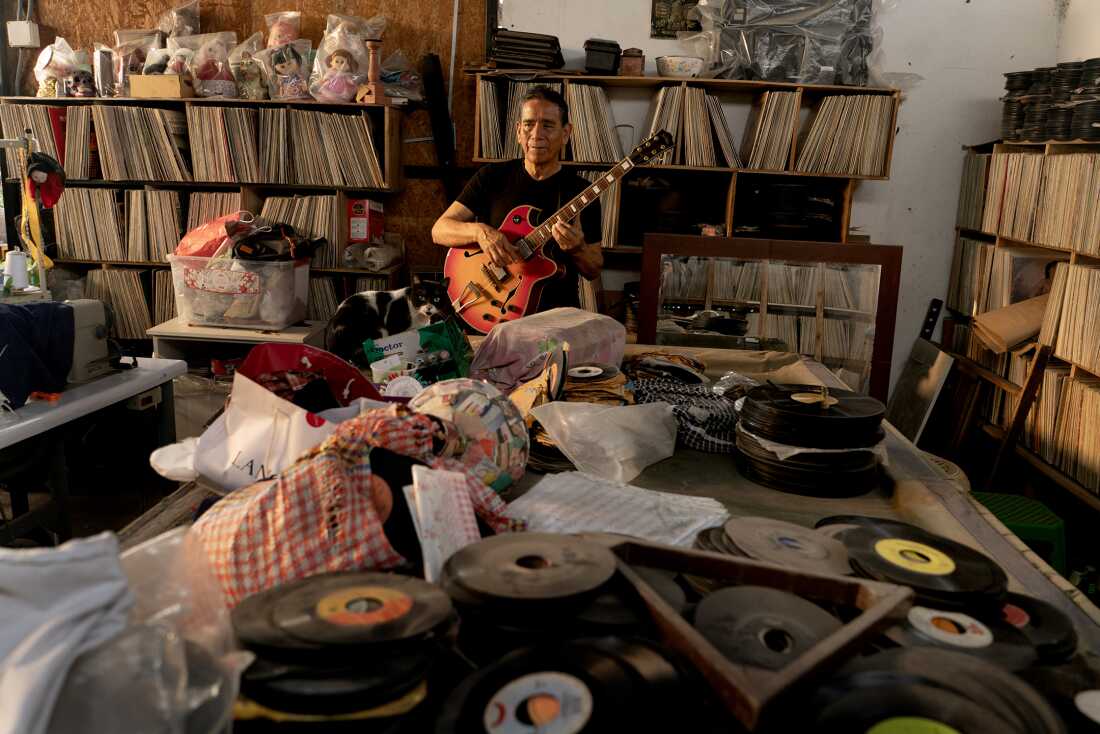
Pancho Acosta from Compay Quinto poses with his guitar in his Lima residence on November 2, 2024. He played a significant role in developing chicha’s signature sound, which fuses electric guitar with Colombian cumbia, Andean huayno, Cuban guaracha, rock ‘n roll, and more.
Ivan Kashinsky
hide caption
toggle caption
Ivan Kashinsky
Last November, during Día de Todos los Santos (All Saints’ Day) at Lima’s El Sauce cemetery, crowds gathered around graves, offering food and drinks to departed loved ones. As dusk settled over the desert hills encircling the city, four saxophonists played huayno tunes from Huancayo, their melodies reverberating among the tombstones while families danced and shared beers. The music of Chacalón echoed from street vendors’ speakers, and portable devices played Los Shapis as visitors honored their ancestors. Even four decades later, chicha remains a vibrant thread in the fabric of Peru’s capital.
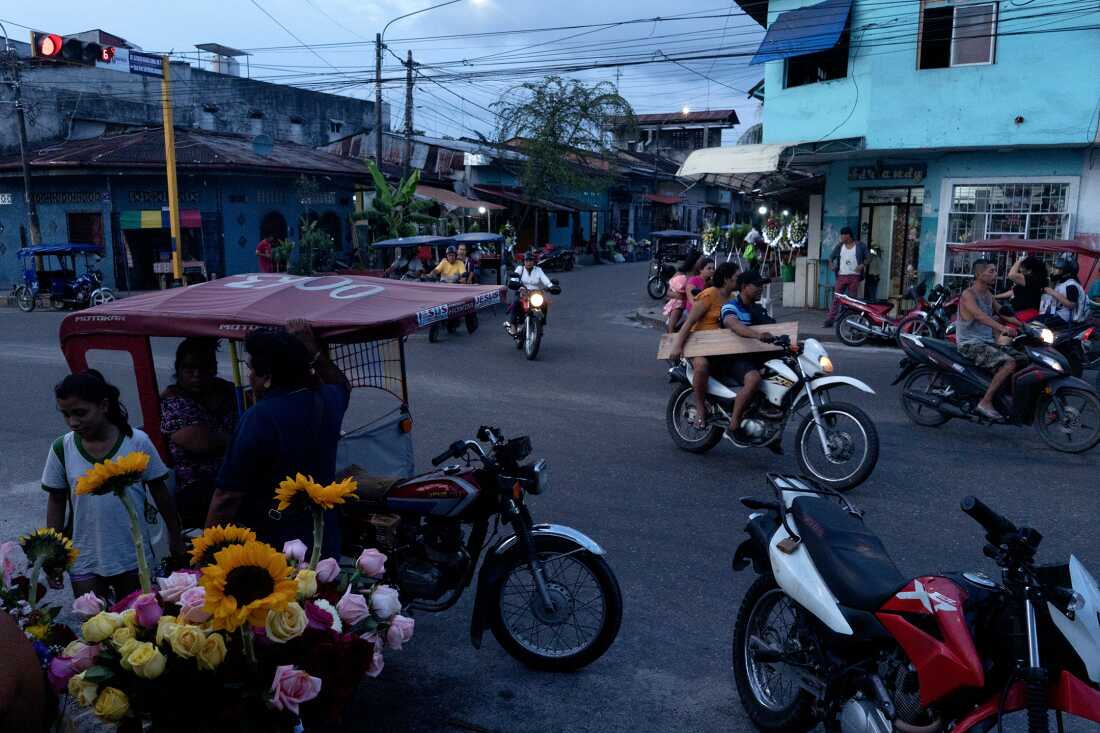
Vendors sell flowers outside a cemetery in Iquitos, Peru, on October 28, 2024, while motorcycles pass by. Iquitos is renowned as the home of Los Wembler’s de Iquitos, one of the first bands to develop the cumbia Amazonica style.
Ivan Kashinsky
hide caption
toggle caption
Ivan Kashinsky
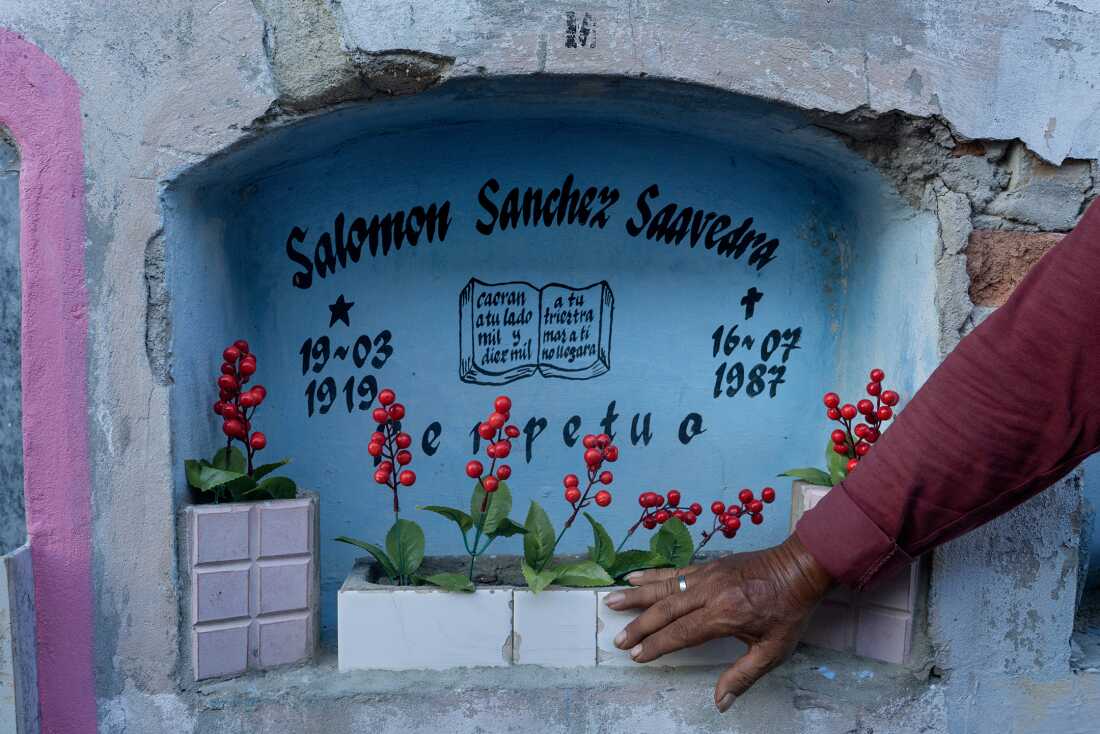
Helner Misael Sánchez Casanova, known as Tacto and a member of Los Wembler’s de Iquitos, pays respects at the grave of his father, Salomon Sánchez Saavedra, at Lima’s El Sauce cemetery on October 28, 2024. Salomon established the band with his five sons in 1968.
Ivan Kashinsky
hide caption
toggle caption
Ivan Kashinsky
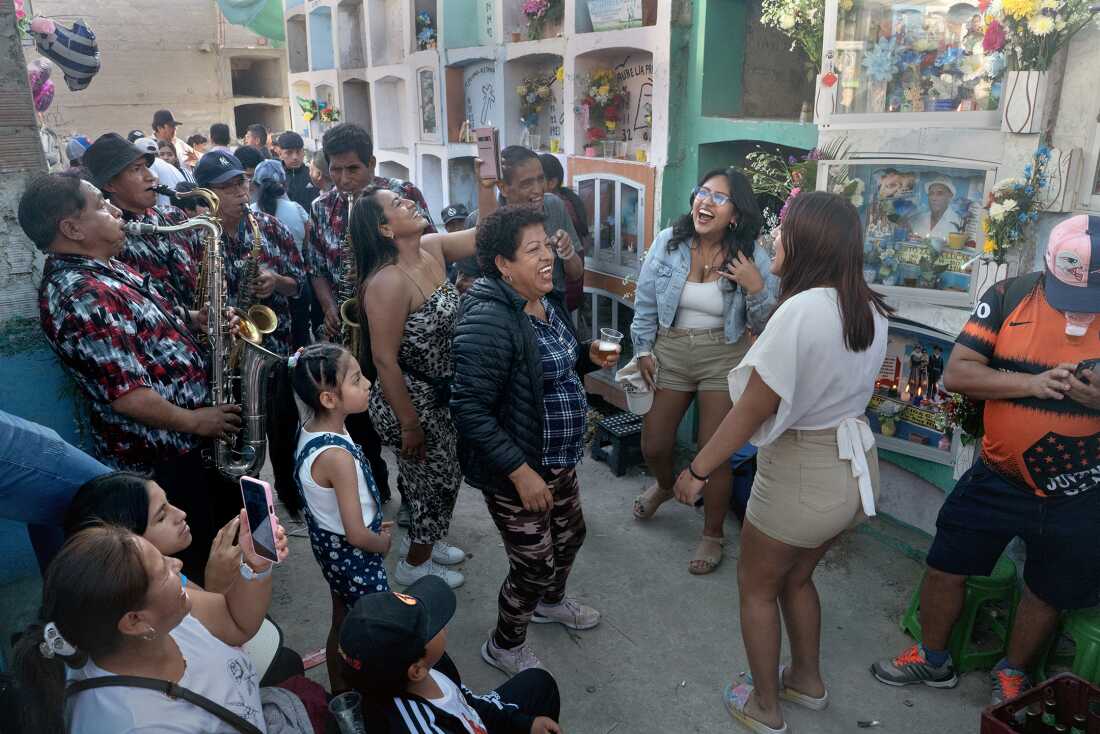
On November 1, 2024, four saxophonists from Huancayo play huayno music while a family dances during All Saints’ Day at Lima’s El Sauce cemetery. This huayno music, blended with Colombian cumbia, helped create the chicha genre.
Ivan Kashinsky
hide caption
toggle caption
Ivan Kashinsky
This feature was produced with support from the National Geographic Explorer program.
Ivan Kashinsky is a Los Angeles-based photojournalist. Discover more of his work at IvanKphoto.com or follow him on Instagram at @ivankphoto.


